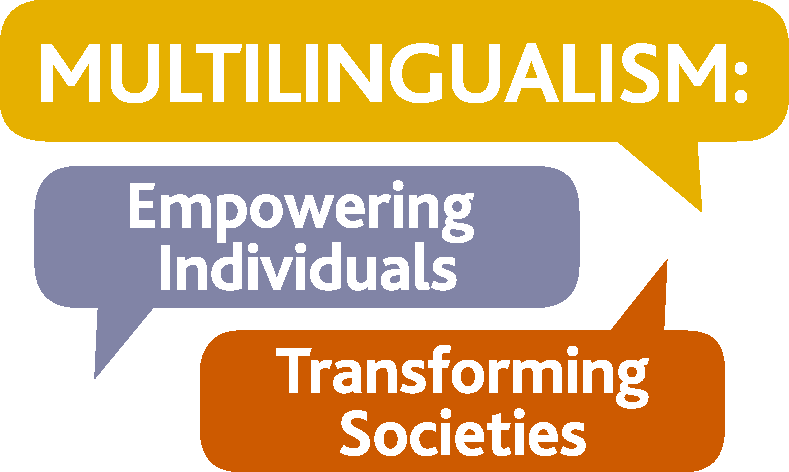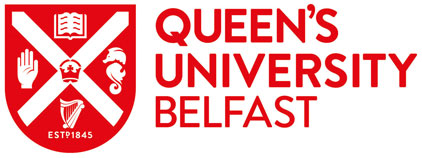Background
Since the 1960s, the implementation of primary languages learning in England has been subject to a number of false starts and has tended to be localised, vulnerable to change and variable in quality (Burstall 1974; Wade and Marshall 2009; Cable et al. 2010). For the first time in the history of language learning, the review of the National Curriculum in 2012 set out to include the teaching of a foreign language to children aged 7 to 11 as a statutory requirement. The new foreign language programme of study (2013) stipulated that children should make substantial progress in one language, either a modern language or an ancient language such as Latin or Greek. The choice of which language to teach was left to individual schools.
The new foreign languages programme of study will require an appropriate balance of spoken and written language. Pupils must learn to speak in sentences, with appropriate pronunciation. They will have to express simple ideas with clarity. Pupils should also learn to write phrases and short sentences from memory. They should develop an understanding of basic grammar. And they should become acquainted with songs and poems in the language studied. Teaching should focus on making substantial progress in one language (DfE 2013).
The review for all subjects favoured a clear and structured approach in setting out expected standards, and it emphasised strong school accountability. Primary schools were to describe the subject content of their language programmes in such a way as to make it clear both what should be taught, and what children should know and be able to do as a result of that teaching.
Secondary school language learning was to build on the foundations laid at primary school, whether children continued with the same language or began a new one. The introduction of a policy for primary languages based on sound principles appeared to be a very welcome step forward. However, closer examination revealed significant challenges in embedding the policy due to a lack of supporting infrastructure, and minimal guidance on how to implement the policy or the programme of study. The challenge of introducing a new statutory requirement to teach a language within the context of wholesale curriculum reform was nonetheless fully embraced by primary schools, but the quality and pace of implementation are variable across the country, and for some schools the impact of change was acute.
The legal requirement to teach all children a second language from the age of seven came into force in 2014. This means that the first cohort of language learners to have studied a language at Key Stage 2 (ages 7 to 11) in English state primary schools made the transition from primary to secondary school in September 2018. The outcomes and potential impact of four years of language learning as a statutory part of the national curriculum are now becoming apparent.
It is therefore crucial at this point to review the extent to which the statutory requirement has been implemented, to identify the challenges and to make recommendations towards the full implementation of current policy.
Identifying the challenges
The national curriculum reform set out strong expectations for a statutory period of language learning from age 7 through to age 14, spanning Key Stages 2 and 3, but for these ambitions to be met, key priorities needed to be addressed. These priorities related to planning for progress and learning outcomes, developing teaching approaches, monitoring and assessment, and ensuring smooth and productive transition from primary to secondary school for children. All of these would ideally have encouraged local agreement on choice of language, curriculum models and subject content.
Yet evidence from Language Trends 2018 (Tinsley and Doležal 2018) points to unfulfilled expectations. There is uneven primary language provision across the country. In addition, critical analysis reveals a number of factors that impede the development of any coherent provision of language teaching in both primary and secondary schools (ages 7 to 14).
The principal problems in schools relate to time allocation, teacher subject knowledge and language proficiency, limited access to professional development and a lack of shared and agreed understanding of pupil progress at the point of transfer from primary to secondary schools. Given the central importance of subject knowledge to good teaching, the variability of initial teacher training in subject knowledge development is a cause of concern. The current infrequency of Ofsted inspection of primary languages is a further cause of concern (Holmes and Myles 2019, p. 9).
The situation in schools
Evidence from the most recent Language Trends Survey (Tinsley and Doležal 2018), as well as from international OECD research, the Carter Review (2015) and expert and practitioner input from the RiPL Primary Languages Summit held in November 2018, was used to identify successes and challenges experienced by schools in implementing the policy.
Primary schools
Time allocation is a major problem. According to evidence from the British Council’s Language Trends 2018 report, which gathered evidence from 692 primary schools and 785 secondary schools in England, approximately 80% of responding primary schools allocate on average between 30 and 60 minutes per week for language learning, although this is often irregular and eroded by other priorities. 71% of responding primary schools say that finding enough curriculum time to teach a language is a major challenge. Holmes and Myles observe that time allocation in England is normally below the OECD average (4%), equating to just over 2% of available curriculum time, and well below that of e.g. Spain with 10% (OECD, 2014).
According to Language Trends 2018, there has been an increase in the number of primary schools undertaking some form of monitoring and assessment of their pupils’ progress, although these are often informal. Only 16% of responding primary schools say that they carry out a formal assessment of each child, while 15% make no assessment of their pupils’ language learning and keep no record of progress.
Teachers’ subject knowledge can be problematic. 62% of responding primary schools identified improving staff languages proficiency and confidence as an ongoing challenge. In 58% of responding primary schools, class teachers delivering languages have had no CPD for languages in the past year.
Holmes and Myles point out that weaker subject knowledge and lack of confidence are likely to be an inevitable consequence of lack of language skills on entry to initial teacher education, where there is unlikely to be routine assessment of proficiency levels of trainees’ language capability on entry and inconsistent opportunities for trainees seeking to specialise in language teaching to upskill. Holmes and Myles cite research evidence from the Carter Review (2015) relating to the scant provision for language specific training. Carter concluded that inconsistency in initial teacher training affects provision.
[I]n subjects like modern foreign languages, […] trainees are more likely to lack subject knowledge, experience and confidence […], meaning that ITT needs to address core subject knowledge [...] to give primary teachers the necessary knowledge as well as confidence to teach them effectively (Carter 2015).
Carter proposed that the DfE should make funded in-service subject knowledge enhancement courses available for primary teachers to access as professional development – particularly in subjects such as modern languages.
A relative lack of status for primary languages in the curriculum at Key Stage 2 comes as a result of the priority given to English and maths. Children are examined in these two subjects at the end of primary school, with test scores feeding into publicly available performance tables. As a consequence, schools tend to prioritise these two subjects over other areas of the curriculum, including languages. The new Ofsted Framework 2019 with its focus on intent, implementation and impact (school accountability by government inspection) “will challenge schools where too much time is spent on the preparation for tests at the expense of teaching”. This change in inspection focus should incentivise schools to develop more detailed planning of the primary languages curriculum to ensure depth and breadth of learning and clear progression.
Primary–secondary transition
According to Language Trends 2018 (Tinsley and Doležal 2018), “the lack of consistency between primary schools, in a context where secondary schools take pupils from many different feeders, is one of the barriers to smooth transition and hinders coherent progression in learning” (p. 3).
There is disparity in expectations of children’s progress. Primary schools frequently believe their children are achieving more than what the secondary schools judge the children to have achieved on transfer. “While 51% of primary teachers believe that their pupils have attained the expected level of competence as set out in the Key Stage 2 programme of study, only 12% of secondary teachers agree” (p. 13).
There is a similar discrepancy in cross-phase planning for progress. Only 16% of responding primary schools say they take part in network or cluster meetings with secondary schools. Only 2% of feeder primaries say that they collaborate with their secondary schools in developing units of work in languages; 1% say they plan lessons together. The lack of continuity means that secondary teachers take little or no account of prior learning, and as a result, pupils are required to start learning the language again from the beginning, which can lead to demotivation and an early loss of interest and desire to learn languages.
Lessons from research into primary language learning: implications for practice
Evidence from available inspection findings, research, and teacher testimony all point to the fact that policy decisions alone are not sufficient to ensure that successful teaching and learning programmes for primary languages take place. Future decisions with regard to policy development and its implementation should take into account research-informed understanding of how children learn a new language and the conditions needed for effective progress in terms of context, teacher expertise and age-appropriate pedagogy.
During middle childhood (from ages 6/7 to 11/12), children make great strides in their learning, much of which is associated with their developing cognition. From learning implicitly, children become gradually more capable of explicit learning towards the end of that period, their awareness of language increases, their L1 literacy develops, and they become increasingly able to sustain – and enjoy – more challenging activities, where they begin to construct meaning in the new language, becoming more aware of how the language system works in their own language and how this compares with the new language they are learning (Robson 2006).
The amount of time dedicated to language learning is crucial. For implicit learning to take place, primary school children need rich and plentiful input and opportunities to use the language meaningfully, as their ability to rely on explicit mechanisms to aid their learning remains limited until the later phases of middle childhood. In most primary classrooms, input is very limited, and because of their primarily implicit mode of learning, children will make progress only in relation to the amount of input they receive. Enough time needs to be allocated to language learning.
In addition, during middle childhood, children begin to switch “engagement”. Primarily driven by emotional engagement (approval) and intrinsic motivation (enjoyable activities), children become increasingly able towards the end of this period to sustain concentration and attention (behavioural engagement) and to reflect on their learning activities (cognitive engagement). Children become increasingly able to benefit from explicit instruction, and language activities can and should become increasingly more challenging.
Moreover, strong L1 literacy skills in any language support the development of children’s awareness of language and are linked to higher language learning outcomes. It makes sense, therefore, to strengthen links between L1 literacy and all languages children know and learn, encouraging this interdependency to flourish.
Children “love” languages, and are generally highly motivated in primary school. They are interested in face-to-face communication (from holidays, link schools abroad etc.) and are motivated to continue by a sense of competence (“I can do this”), and an awareness of progression (“I am steadily learning more”). Motivation declines when this sense of progression and achievement is lacking. To maintain classroom engagement and increase uptake in later years, children need teacher encouragement and a variety of increasingly challenging learning activities, which will offer them opportunities to make meaning independently and adapt what they know to new contexts.
In fact, teacher input is crucial. For primary language learners, learning outcomes and motivation are very much influenced by factors concerning the teacher they interact with: in a large longitudinal study in England (Cable et al. 2010), the primary schools where learners made the most progress employed teachers with high levels of language proficiency and training, and dedicated a minimum of 60 minutes a week to the subject. Teaching time and teacher language proficiency have been shown repeatedly to be linked to learning outcomes. When teaching time is short and teacher proficiency below CEFR B1, these outcomes may be limited. Teacher training (language pedagogy) has an impact on young learners’ attitudes and sense of themselves as language learners. A teaching approach in line with learner goals is important for motivation; all the more so across transition, where research indicates that a sense of progression is needed to sustain motivation.
At this critical moment in the history of language policy in schools, there is a further opportunity to strengthen and encourage multilingual skills in the current and next generation of primary pupils, which should not be overlooked. It comes from the increasing number of primary-age children who already use more than one language in their everyday communication. The percentage of pupils in primary schools with English as an additional language (EAL) has steadily increased since 2000. According to official figures, 21.2% of children in state-funded primary schools have English as an additional language (Department for Education 2018), resulting in a highly heterogeneous classroom population. Discussions within the profession around how best to teach a modern language and policy documents tend to ignore this large subset of the primary population, assuming a context of monolingual English-speaking pupils. This is no longer the case for many primary classrooms. Recent research evidence (Costley et al. 2018) points to an advantage for EAL children in language learning outcomes. Teaching approaches should recognise and draw upon the multilingualism of EAL children in the language classroom, e.g. by encouraging pupils to articulate and use language learning strategies that they have acquired in learning other languages, including English, and to compare similarities and differences between and across all the languages that they use, to develop and reinforce their metalinguistic awareness.
RiPL White Paper solutions and recommendations (pp. 12–14 and 15–17)
- Time allocation: at least one hour per week; a non-statutory minimum of 140 hours over Key Stage 2.
- Government-funded professional development for primary teachers to strengthen primary language subject knowledge, pedagogical understanding and language proficiency.
- Curriculum planning: commission non-statutory guidance on minimum core content, defining what children should know/be able to do in pronunciation, phonics, grammatical structures, vocabulary and knowledge about language.
- Transition: strengthen primary–secondary collaboration; provide receiving schools with a clear statement of what pupils have been taught and what they should know and be able to do at the point of transfer.
- Assessment and reporting: agree a nationally recognized benchmark by the age of transfer from Key Stage 2 to 3.
- Develop effective use of digital technology to support learning, training and reporting, including the development and piloting of an e-folio.
- School accountability: Ofsted should include a focus on primary languages, gathering evidence of intent, implementation and impact related to curriculum planning.
- School leadership: develop effective partnerships between senior leadership and governors to strengthen accountability, and improve coherent and structured progression in primary languages in the school development plan.
- Strategic role of research: the DfE to include a focus on the implementation of primary languages policy in the next round of social research aims, to garner high quality evidence to inform policy development and KS2 delivery.
- Create a National Taskforce for Primary Languages (NTPL) to support school-led improvement in the teaching of primary languages, build the foundation of future language learning at Key Stage 3, and increase uptake at Key Stage 4 and beyond. Primary schools face challenges that are distinct from those facing secondary schools; these must be addressed head on.
Resources
For jargon-free one-page summaries of relevant research on primary language learning and teaching, see http://www.ripl.uk/research/
Further reading
Burstall, C. (1974). Primary French in the Balance. Windsor: NFER Publications.
Cable, C., Driscoll, P., Mitchell, R., Sing, S., Cremin, T., Earl, J., Eyres, I., Holmes, B., Martin, C. & Heins, B. (2010). Languages Learning at Key Stage 2, A Longitudinal Study: Final Report. Department for Children, Schools and Families Research Report DCSF-RR198.
Carter, A. (2015). Carter Review of Initial Teacher Training. Department for Education.
Department for Education (2013). Languages Programmes of Study: Key Stage 2.
Department for Education (2018). Schools, Pupils and their Characteristics.
Holmes, B. & Myles, F. (2019). White Paper: Primary Languages Policy in England – The Way Forward.
OECD (2014). Education at a Glance 2014: OECD Indicators. OECD Publishing.
Ofsted (2019). The Education Inspection Framework.
Robson, S. (2006). Developing Thinking and Understanding in Young Children. Oxford: Routledge.
Tinsley, T. & Doležal, N. (2018). Language Trends 2018: Language teaching in primary and secondary schools in England. British Council.
Wade, P. & Marshall, H. (2009). Primary modern foreign languages longitudinal survey of implementation of national entitlement to language learning at Key Stage 2. Department for Children, Schools and Families Research Report DCSF-RR127.






